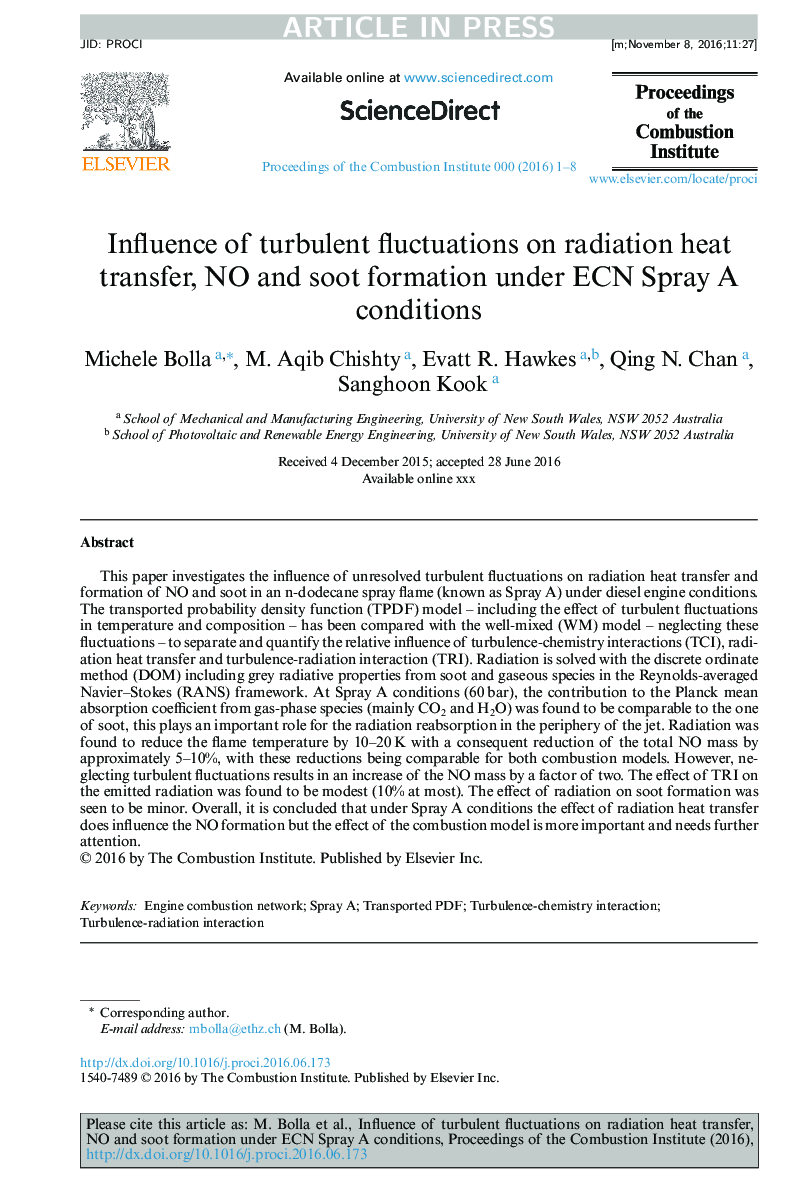| کد مقاله | کد نشریه | سال انتشار | مقاله انگلیسی | نسخه تمام متن |
|---|---|---|---|---|
| 4915410 | 1427915 | 2017 | 8 صفحه PDF | دانلود رایگان |
عنوان انگلیسی مقاله ISI
Influence of turbulent fluctuations on radiation heat transfer, NO and soot formation under ECN Spray A conditions
دانلود مقاله + سفارش ترجمه
دانلود مقاله ISI انگلیسی
رایگان برای ایرانیان
کلمات کلیدی
موضوعات مرتبط
مهندسی و علوم پایه
مهندسی شیمی
مهندسی شیمی (عمومی)
پیش نمایش صفحه اول مقاله

چکیده انگلیسی
This paper investigates the influence of unresolved turbulent fluctuations on radiation heat transfer and formation of NO and soot in an n-dodecane spray flame (known as Spray A) under diesel engine conditions. The transported probability density function (TPDF) model - including the effect of turbulent fluctuations in temperature and composition - has been compared with the well-mixed (WM) model - neglecting these fluctuations - to separate and quantify the relative influence of turbulence-chemistry interactions (TCI), radiation heat transfer and turbulence-radiation interaction (TRI). Radiation is solved with the discrete ordinate method (DOM) including grey radiative properties from soot and gaseous species in the Reynolds-averaged Navier-Stokes (RANS) framework. At Spray A conditions (60Â bar), the contribution to the Planck mean absorption coefficient from gas-phase species (mainly CO2 and H2O) was found to be comparable to the one of soot, this plays an important role for the radiation reabsorption in the periphery of the jet. Radiation was found to reduce the flame temperature by 10-20Â K with a consequent reduction of the total NO mass by approximately 5-10%, with these reductions being comparable for both combustion models. However, neglecting turbulent fluctuations results in an increase of the NO mass by a factor of two. The effect of TRI on the emitted radiation was found to be modest (10% at most). The effect of radiation on soot formation was seen to be minor. Overall, it is concluded that under Spray A conditions the effect of radiation heat transfer does influence the NO formation but the effect of the combustion model is more important and needs further attention.
ناشر
Database: Elsevier - ScienceDirect (ساینس دایرکت)
Journal: Proceedings of the Combustion Institute - Volume 36, Issue 3, 2017, Pages 3551-3558
Journal: Proceedings of the Combustion Institute - Volume 36, Issue 3, 2017, Pages 3551-3558
نویسندگان
Michele Bolla, M. Aqib Chishty, Evatt R. Hawkes, Chan Qing N., Sanghoon Kook,